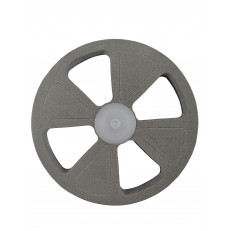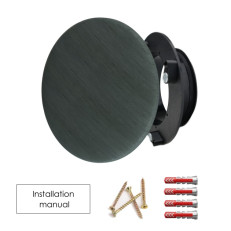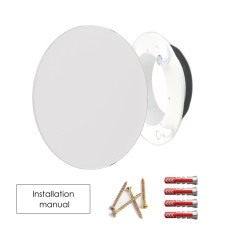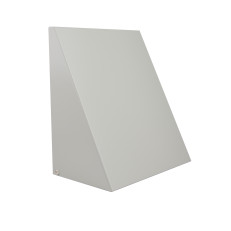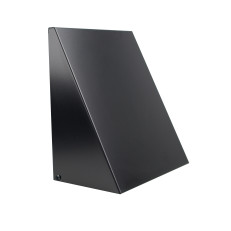Components
Information about the materials used in recuperation installations in the RD
Below is a description of the materials and systems that we probably proposed to you as part of the price offer. If you are interested in another alternative (another type of element), please contact us before ordering to assess compatibility.
This is not always the cheapest solution, but according to our experience, it is better to choose a higher quality material for some elements of the system. We have tried all the mentioned materials, and therefore we can warmly recommend them to you.
Intake and exhaust:
"Suction from the facade" means that you will have a grid on the external wall. You can view all grilles or exhaust pieces here . If the design includes an exhaust to the roof, we recommend fitting one of these exhaust headers .
Combined intake and exhaust grills are the last option. They can suck in already degraded air, so try to avoid them.
The non-return valve is used to prevent outside air from entering the pipe and thus the unit when the unit is switched off. Since the system is designed for year-round ventilation and the consumption of the unit is usually around 30 W at the lowest speed level, this is only an emergency solution in case of a power outage or system shutdown for another reason. The advantage of the non-return valve is that it can be installed in the pipe right next to the exterior wall. The designed check valve is probably the RSKT valve.
An alternative solution is the use of a damper and a servo drive with an emergency function (in the event of a power failure). We recommend this solution to clients where the orientation of the intake grille is against the windward side of the house. If the flap is closed mechanically by a servo drive or just a spring (for the non-return flap variant), the rate of freezing and heat leakage through this part is almost the same, since both flaps are made of the same material. For the damper and servo drive, it is necessary to prepare the electrical installation and 50 cm of space on the suction branch. For this solution, we use 24V and 220V servo drives.
The condensing piece is always installed on the exhaust branch if it goes through an unheated space.
EPP pipe (HR-WTW) despite its high price, we highly recommend it. Thanks to its insulating and mechanical capabilities, it is ideal both for penetration through the wall and for guiding the intake and exhaust branches in the interior. By using this material, thermal bridges do not occur in the structure and the formation of condensate is minimized. Thanks to special couplings, even the connection of elbows and the connection of two pipes are completely error-free.
You can find more about this type of pipe here .
If the intake or exhaust branch is larger than 180mm in diameter, then we use the SPIRO system with fittings with seals and high-quality rubber insulation. In the case of assembly, it is better to insulate the pipe on the ground and only then connect it, place it in position and anchor it - preferably with PZ tape or SBO sleeves without rubber with a diameter 3-4 cm larger than the SPIRO pipe (insulation thickness 19 mm).
An alternative is the ADURO system. We compare the differences between the two systems HERE .
Inlet and outlet:
For this part of the system, we most often use a star system with plastic hoses with a diameter of 90 mm (in justified cases, in a 75 mm system).


We wrote an article about this issue, you can read it here .
Between the distribution box and the unit, we run an easy-to-clean SPIRO or MULTIPLAST pipe (diameter according to the unit necks, most often 125, 160 or 200 mm), or flexible Masterflex . SPIRO pipes are connected with fittings and seals .A SonoDaL or SonoExtra silencer is installed on the inlet and usually also the outlet, with which we currently have the best experience in the field of residential ventilation.
We only use flexible pipes with an aluminum insert (e.g. SONO or SEMIVAC ) where there is good access for possible replacement or the distribution cannot be solved in another way (this pipe cannot be cleaned properly) - arcs of an atypical angle are formed well in connection with nipples without seals.
Distribution box We usually manufacture our own ATYP box made of galvanized steel based on the individual needs of the client. The box contains the required number of sockets, high-quality antibacterial noise insulation and a service bottom/lid. In the case of installations where mass-produced boxes can be used, we use the boxes from the offer here (90 mm) and here (75 mm). It is necessary to leave access to the distribution boxes for future cleaning of the system!!! That is mostly a service hole in the SDK, access to the floor, etc. - ACCESS TO SERVICE/REVISION HOLES IS PROVIDED BY THE INVESTOR!
From the distribution box, the air travels through a plastic flexible pipe of 90 mm and 75 mm , which is without any joints and almost perfectly smooth on the inside. We recommend using the DALFLEX HYGIENIC type, in addition to the good price, the pipe has a slightly larger internal diameter than pipes from other manufacturers, which is suitable for the lowest possible pressure loss. We recommend the pipe in the HYGIENIC version because of its antibacterial and antifungal additives. We recommend installing manual control flaps at the beginning of the pipeline right next to the distribution box. In addition to the correct and easy regulation of the system, they can be useful in case of a future change in the use of the house, when they can simply be used to throttle or close the air inlets or outlets. Another element, which is very suitable due to the reduction of pressure loss in sharp bends, is a sheet metal arch.
Pipe termination with a transition to the end element (valve) is done using ceiling or wall boxes 90 mm and 75 mm . Depending on the composition of the ceiling and the height of the soffit, the most suitable one is used and the valve is inserted into it. The necks of the low boxes can be extended with a 125mm sealing nipple and a 125mm plastic pipe, the plastic pipe shortens well after the SDK is completed.
The last end element are ceiling valves or wall nozzles, or grids . We most often use the Luftuj SQ 125 mm valve for its discreet design, partial direction control and very easy installation. An alternative would be the BDOP valve, which has a larger flow area and is more adjustable/directional, but also has a higher build height and poorer mounting than the SQ. The basic, cheaper variant is the white plastic valves IT 125 mm or their metal alternatives DVS , PDVS 125 mm. If the outlet is in the wall and requires a longer reach, we recommend the LUFTOMET JET or WDZA 125 mm nozzle. For connoisseurs, there is also an offer of designer valves of our production - LUFTOMET , which will complement the luxurious appearance of new housing very appropriately. If you would like a different type of spout than we have on offer, then do not hesitate to contact us anyway.
If we are going to supply the air from the floor, we have included floor grids with floor boxes in our offer. The offer includes designs in aluminum and wood with various colors and motifs.
If you like any other component that is not in the offer, just ask and we will be happy to price it for you if we consider its technical character to be eligible!
Write to us at: info@luftuj.cz
EDITED 12/4/2021

